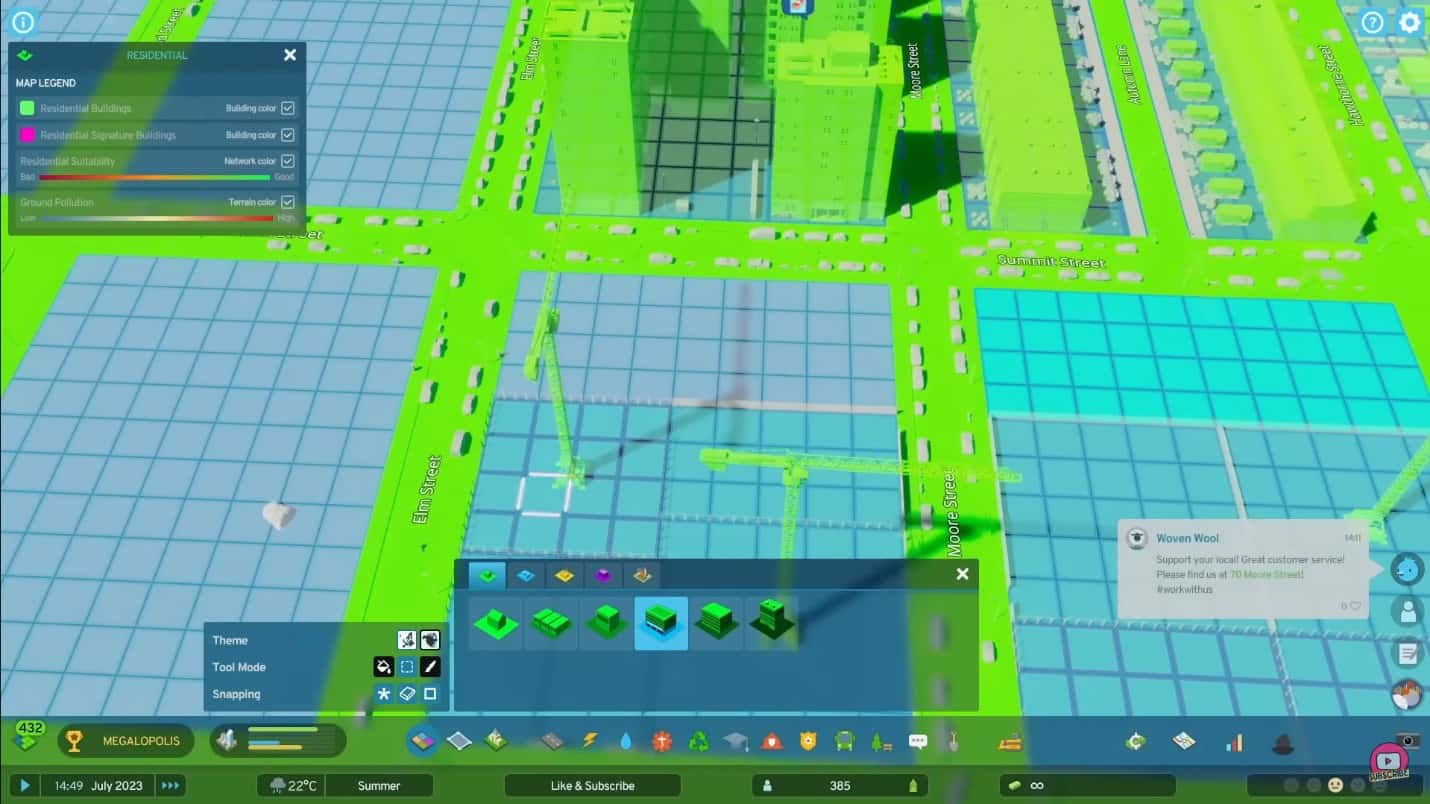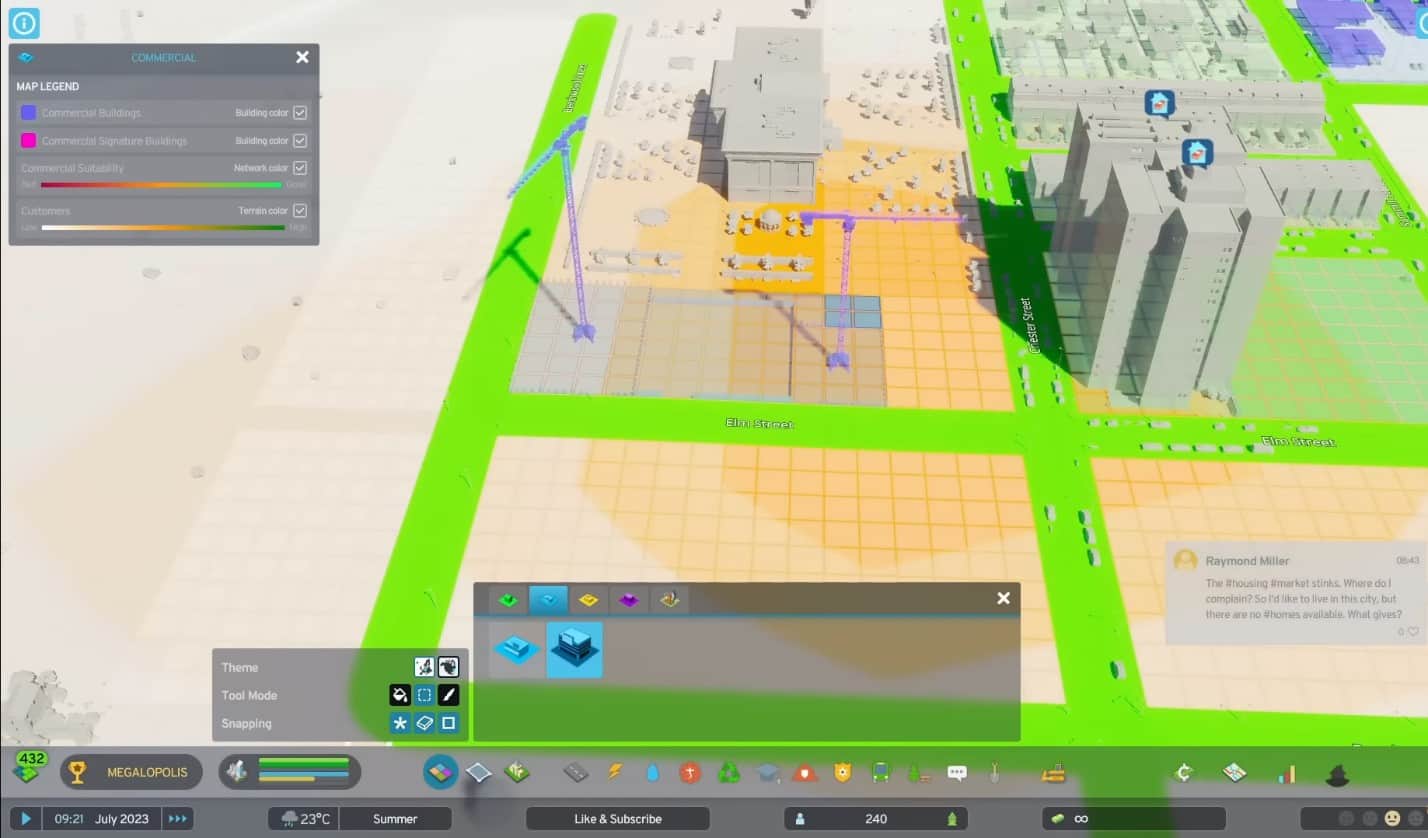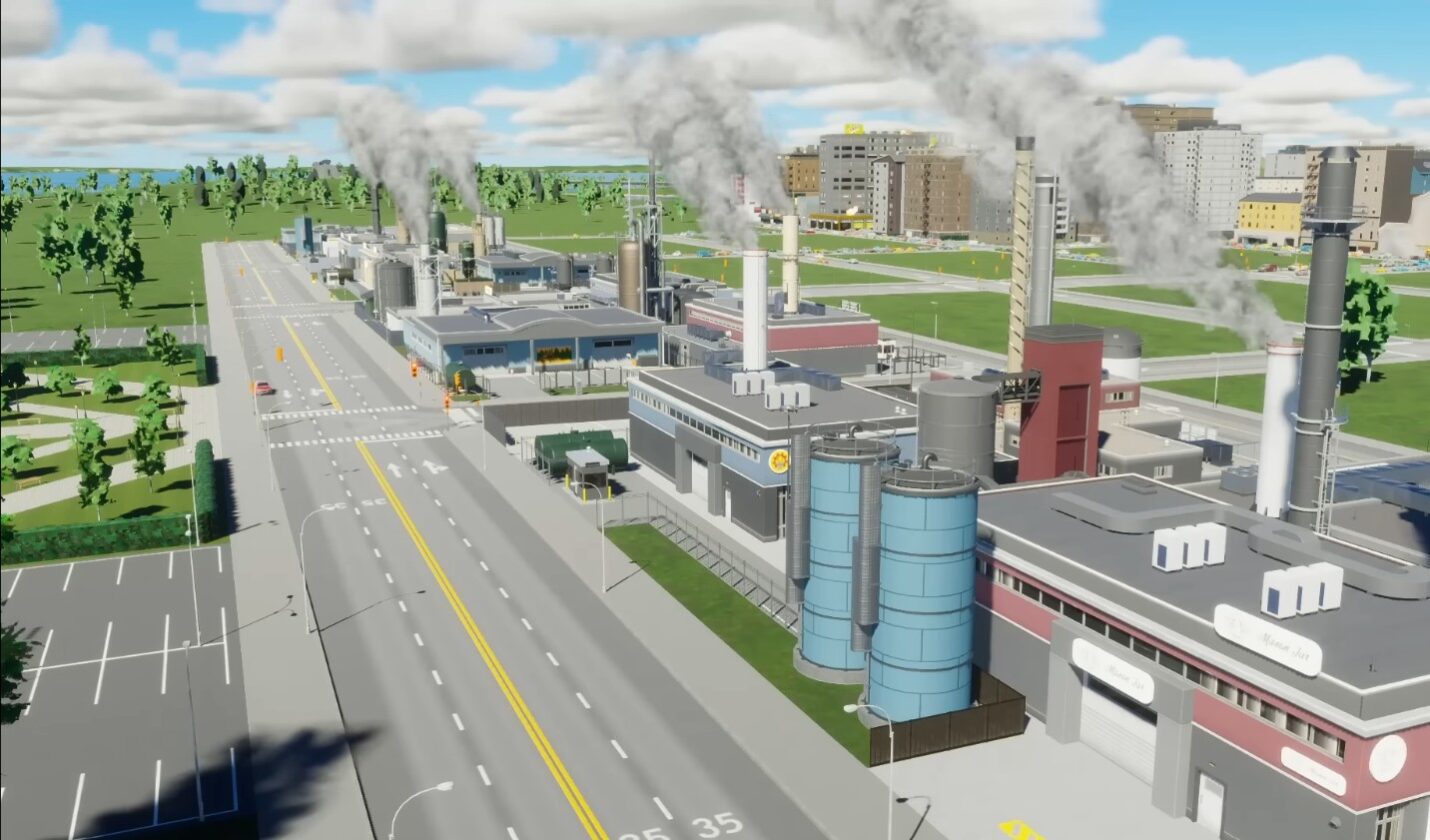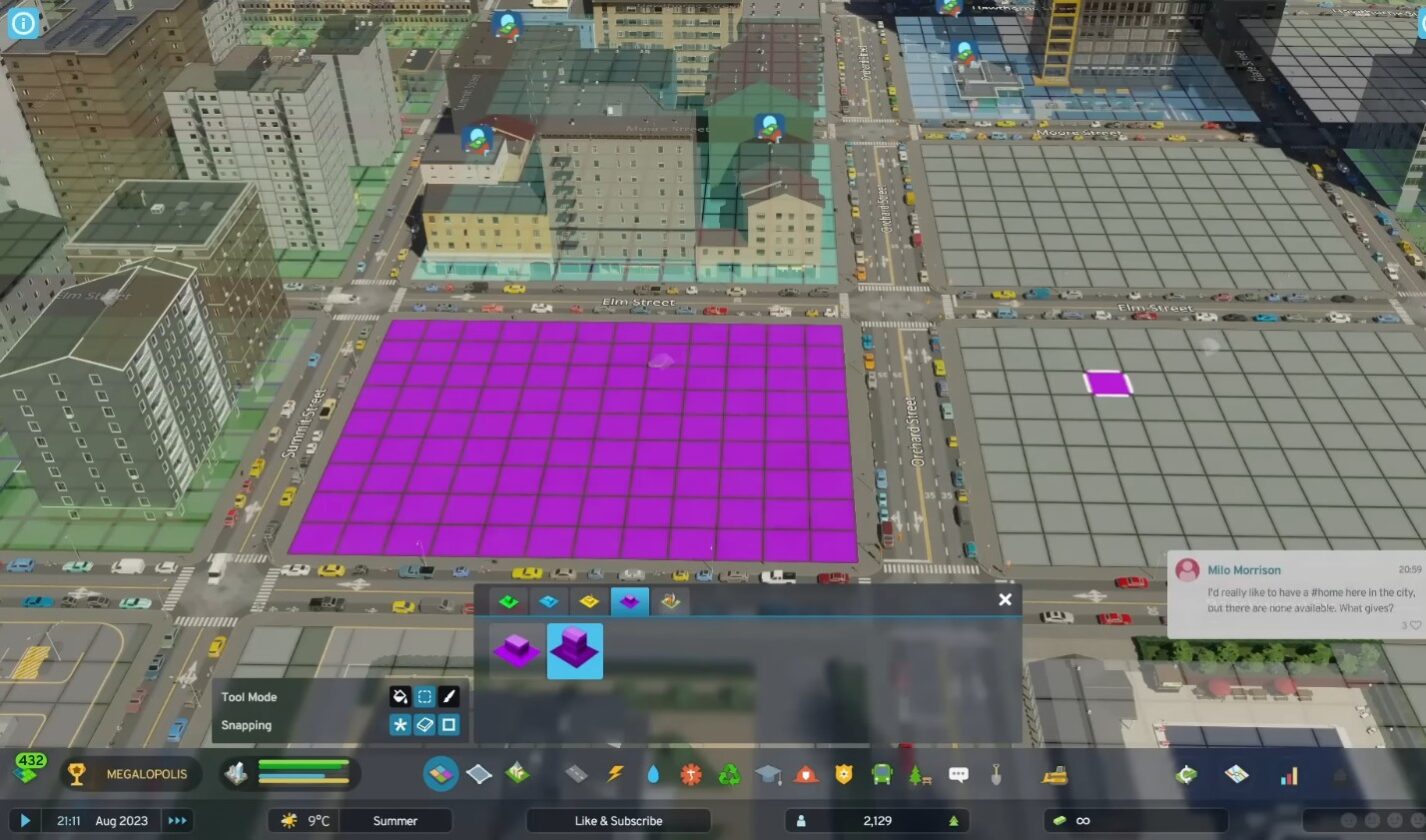Cities Skylines 2 allows you to control the city’s zoning according to your preferences. You can assign different zones for multiple purposes, like setting up aspects of the commercial zone in the residential zone to increase business activities. However, you need to remember that each zone has its specific requirements.
Moreover, these zones have to be placed in those areas of your city which are easily accessible for the people. This way, the buildings present in those zones will upgrade, and you will be able to receive more credits in the form of property taxes.
You can also use the Zoning Tools; these can be used to de-zone any zone type quite easily. If you are interested in learning how zoning works in Cities Skylines 2, then you have come to the right place.
How does Zoning work in Cities Skylines 2
In Cities Skylines 2, you must plan your city according to the zones. This way, you can decide which zone best suits building houses, shops, and setting up industries.
That being said, there are five types of Zones in this game:
Residential Zones
Starting with the Residential type, this particular zone comes with six options. For variety, you can mix the different themes and vary the zoning sizes.

1. Low Density zones
- It is the most common type of Zone in Cities Skylines 2.
- It will be available without unlocking any milestone.
- Tends to have Higher Rents.
- Sensitive to changes in Land Value.
- Uses the most amount of space.
- House least amount of residents.
- Best for Small Towns and Suburbs.
2. Row Houses zones
- Operate under the medium density demand.
- Space-efficient and are exclusively one-tile wide zones.
- They are unlocked at the Tiny Village milestone.
- Slightly Denser than low-residential
- Good for Middle-Income Households
- Need careful planning to make them look good
- Best for transitioning to Denser Areas
3. Medium Density zones
- Unlocked at the Small Village Milestone
- Less sensitive to changes in Land Value
- Higher capacity and Larger Footprint vs Row Houses
- Suitable for City Centers and Transition Areas
4. Mixed-use zones
- Unlocked at the Tiny Town Milestone
- Exact use-case as Medium-density zones
- They require commercial and residential demand
- Great for city centers and Small Town main streets
5. Low Rent House
- Unlocked after you reach the Grand Village Milestone
- Very High Resident Capacity
- Require High-Density Residential Demand
- Best in Areas with Low land value
- A good option when your city has high housing costs
6. High Density Residential
- Unlocked after you reach the Big Town Milestone.
- Very High Resident Capacity
- Best in City Centers and Near Public Transit
- Require strong education and City Services to maintain demand
Commercial Zones
When it comes to Commercial Zones in Cities Skylines 2, you have two options, which include Low and High-density zones. For both types of zones, you will see an overlay with the number of customers, so the darker orange hue area signifies the customer traffic. This also indicates where to place the Commercial Zones.

1. Low-Density Zones
- They specialize in selling retail goods that are either imported or manufactured in your industrial zones
- Have low worker and customer capacity
- Best along busy roads and near Low, near-density residential
- Creates businesses like Gas Stations, Bars, Small Stores, etc.
2. High-Density Zones
- Unlocked at the Great Town Milestone.
- These satisfy commercial demand at a faster rate
- Spawn a mix of mid-rise and high-rise buildings that employ more sims than the smaller commercial zones.
- High worker and customer capacity
- Call sell all types of Goods
- Best in busy City Centers
- Creates Large businesses like Department Stores, Theatres and Hotels
Industrial Zones

The Industrial Zones only have one theme and density in Cities Skylines 2. They process raw materials from specialized industries or import from outside connections and use them to create material goods sold by commercial zones. Moreover, these generate high truck and delivery traffic.
However, industry zones tend to create air pollution, which must be accounted for as well. When Zoning in Cities Skylines 2, you will also observe the wind direction overlay. Keeping that in mind, it will be essential to place the industrial zones opposite those areas so that the residential zones are not downwind of the air pollution.
Office Zones

Office Zones come in two sizes in Cities Skylines 2. These happen to be the low and high-density zones. Furthermore, these zones produce immaterial goods and services like Media and Software.
The Office Zones typically require highly educated workers, which makes education very important in your city. This way, you can maintain healthy office demand.
1. Low-Density Zones
- Unlocked after you obtain the Grand Village milestone.
- These are small office zones and employ fewer workers.
2. High-Density Zones
- Unlocked after you obtain the Small City milestone.
- Get you to massive high-rise buildings, which are great for City centers.
- Go well when placed with other high-density zone types like residential zones.
Specialized Industry Zones

You can set a zone for specialized Industry in Cities Skylines 2. These zones should be abundant in natural resources and connected with roads.
Once you set up the specialized Industry, e.g., Farming Industry, in one of the zones having a fertile area, you will be able to extract raw resources like cotton, crops, etc. These particular resources can be sent to Industrial buildings where you can turn them into commercial products.
However, the specialized industries are placed in those zones that have an activity district connected at their backside. Moreover, the activity area is determined for a specific Specialized Industry when you drag it over a particular area to set it up.
How to remove zones and rezone in Cities Skylines 2
This process can be done by visiting the Zone Tab at the bottom panel. Starting from the right side, you will see a diagonal square icon having four different colors of squares. This icon is the Zone tab, so you can click it, and it will reveal three options for you to access. These will include Theme, Tool Mode, and Snapping.
To remove a Zone, you need to click the second option in the Zone tab, and it will be the Tool Mode. In that option you can then choose from the three options, namely, Fill Mode, Marquee Mode, or the Paint Mode. Click the right mouse button and hover it above the zone area you want to remove.
Similarly, if you want to de-zone in Cities Skylines 2, then you can use the Tool Mode for that purpose as well. You can use the Fill Mode to fill all the zone tiles in the same block. Moreover, the Marquee tool allows you to paint the zone tiles according to your preference.
After using these tools, you can also use the Paint tool to change the type of your zone tile. However, it will take some work to balance your zoning demand in Cities Skylines 2. In some cases, it will be okay to ignore the low-density zone and focus on improving other city services to generate more demand for Higher-Density Zoning types or offices.
You can also replace any zone type at any time, and the new zone types will grow over time as the demand arises.
